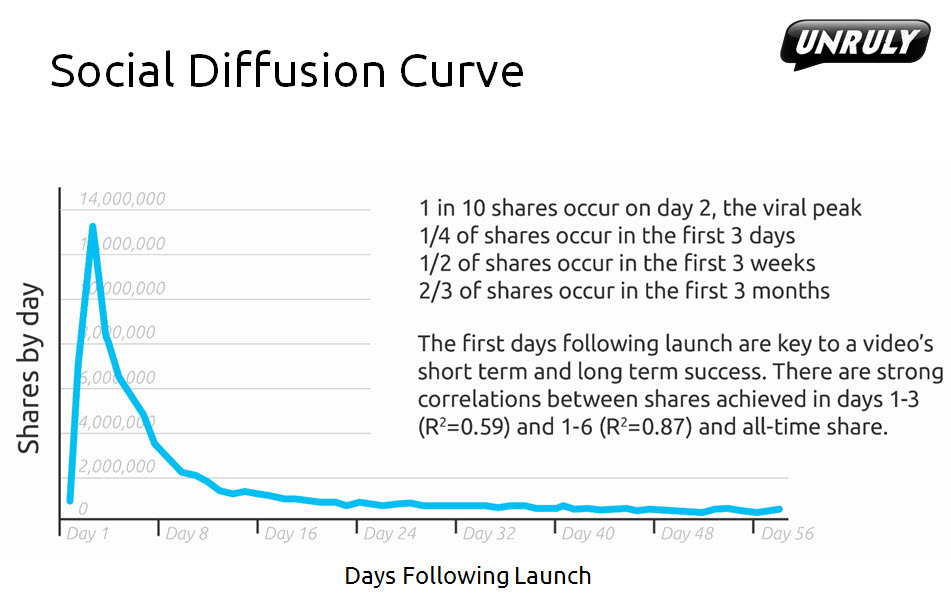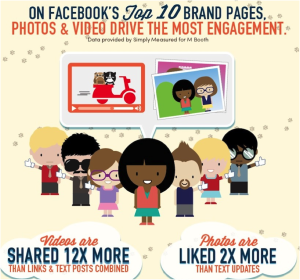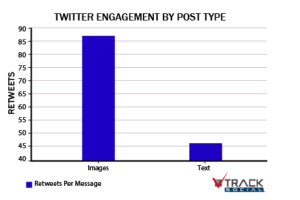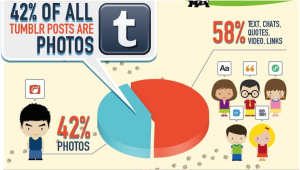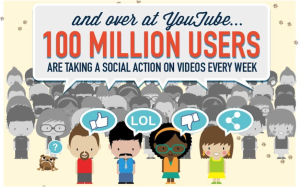Blog
Blogroll
- CGAP Blog
- Co.Design
- Democracy in Development
- From Poverty to Power
- Impatient Optimists
- Innovations for Poverty Action
- Neiman Journalism Lab
- Next Billion Blog
- NYTimes: Fixes
- NYTimes: India Ink
- PBS: Media Shift
- Poverty Matters Blog
- Stanford Social Innovation Review
- TED: Global Issues Blog
- Undercover Economist
- View From the Cave
- World Bank: Development Impact
- World Bank: Perspectives on Development
Going Viral
The Dollar Shave Club ad has shown the world that it doesn’t take lots of dollars to make a video that goes viral.
The now-legendary low budget video ad made by the Venice, California-based $1 razor company nearly crashed the company’s Web site when it was released, and contributed to huge investor interest in the company.
The search for the viral video holy grail is rapidly becoming big business. In reality, making a video that “goes viral” remains more mystery than art or science. But now the folks at Microsoft Research have created viral search, an algorithm that maps what happens when content goes viral, as this video shows:
This video does a great job of explaining what “going viral” means–what happens. But how do you create viral content?
Creating Viral Content
Experts who study the science of video virality for advertising purposes say there are two key ingredients to making a video that goes viral: the strength of the psychological response, and the strength of the social motivation—the reason viewers share.
It means provoking an emotional response in your audience, positive or negative. On the positive side, it might mean making them laugh, pulling on the heart strings, perhaps appealing to nostalgia or arousal—all things Hollywood has known for generations. Negative reactions—disgust, anger, shock, or fear—are also effective.
Social Sharing
The psychological response is only one part of the viral recipe. What makes people share?
We know that visual content is king on social. Tweets with photos and images are tweeted significantly more than other content. But what provokes sharing that makes a video go viral? Here the answers from the experts are a lot more nebulous.
People share because they want to share social good, because a piece of content captures the zeitgeist or connects practically to real life (e.g. sharing the trailer of a movie with a friend that you want to see this weekend with that friend).
Marketing (and planning) matters
Great content is great. But if you really want a video to go viral it won’t happen magically. Videos that are part of a communications campaign have a much greater chance of success.
This graph shows that distribution matters, particularly in the first few days.
An important part of the Dollar Shave Club video’s viral success came from the press coverage they received when the video went live.
Key influencers are a critical part of a good communications plan. When DDB parodied #FirstWorldProblems to bring attention to the water crisis in developing countries, their communications campaign involved celebrities sharing the video with their Twitter followers.
Science or art? I like to think there’s still some magic in creating great original content. But even the best content stands a much better chance with a good communications plan.
Why video? Why now?
When Gangnam Style swept the globe last summer it wasn’t just a dance craze. Psy’s Gangnam Style video became the first online video to pass 1 billion views in just five months on YouTube, part of a massive trend toward visual content that is sweeping the Internet.
It’s a visual world.
Video and multimedia storytelling is becoming one of the key ways in which people get their information, and share it with their networks. Consider some numbers:
- 72 hours of video are uploaded to YouTube every minute
- Three quarters (74%) of Internet users worldwide report watching a video at least once a month
- In 2011, YouTube had more than 1 trillion views or around 140 views for every person on Earth (2.7 billion videos a day). In March 2013 YouTube announced that it had crossed a new milestone: a billion unique users a month
- 70% of YouTube’s traffic comes from outside the United States
- The highest percentage of mobile video consumption is in Asia-Pacific, and Middle East/Africa regions, where 74% and 72% of online consumers respectively report watching video on mobile phones at least once a month
- Sixty percent—and rising—of all Web traffic is video
- Three hours of video is uploaded per minute to YouTube from mobile devices.
New platforms and tools such as Storyplanet and Visual.ly have emerged in recognition of the power of visual storytelling. The exponential growth of social media properties such as Instagram, Tumblr, and Pinterest all attest to the power of visual communication.
Online video is increasingly part of any digital strategy. The Wall Street Journal, Washington Post, New York Times, Economist, and Financial Times are all building up their video production capacity, and some are opening channels for online video.
Watching no longer means just on TV. Consumers can’t get enough of mobile video, and they’re increasingly watching and uploading their own videos on smartphones, tablets, and other handheld multimedia devices.
Increasing Engagement: Video and Social Media Integration
Photos and video drive engagement. On Facebook’s top 10 brand pages, videos are shared 12 times more than links and text posts combined.
500 years of YouTube video are watched every day on Facebook. 700 YouTube videos are shared on Twitter every minute. So important is visual content that Twitter even adjusted the text-based app again in 2013 to better display video and photos.
On Twitter, posts that contain photos or video are significantly more likely to get re-tweeted:
Visual Content is King on Social
Visuals thrive in social. And in the ever-expanding world of social networking, it is clear that photos, video, and cool new multimedia ways of sharing content are the way to go.
With the advent of social media, being a consumer of video is no longer a passive act. As video is tweeted and shared on Facebook and other social platforms, it becomes a social act. 100 million people take a social action (likes, shares, comments, etc.) on YouTube every week.
Visuals and social have a love-love relationship
Perhaps the most social act of all is creating your video and uploading it online. We may not all be looking to create an offbeat craze a la Gangnam Style, but video and digital storytelling is a great way to engage your audience and to speak—and listen—to the world.

